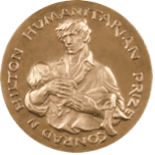Social protection measures, including non-contributory cash transfers, social insurance, and improvements to pension systems, are critical policy tools for mitigating the second-order impacts of COVID-19. HelpAge International is tracking such social protection responses that assist older people.
Key Takeaways
• As of April 10th, a total of 126 countries have introduced or adapted social protection and jobs programs in response to COVID-19. This represents a net increase of 20 countries vs. the week prior, while the number of programs grew by 21%, i.e., from 418 to 505. Among classes of interventions, social assistance (non-contributory transfers) remains the most widely used (including a total of 304 programs), followed by actions in social insurance (127) and supply-side labor market interventions (74).
• Within social assistance, cash transfer programs remain the most widely used intervention by governments. These include 143 programs in 81 countries, with 65 new initiatives introduced specifically as COVID-19 response in 43 countries. Those 143 programs would increase to 171 if social pensions, public works, childcare support, and one-off universal basic income (or helicopter money) are considered. Such an overall cash-based portfolio represents over one-third of total social protection programs (33.8%) and 70.9% of social assistance schemes.
• Improvements to the coverage and benefits of pension systems have amongst the most common social protection responses to the crisis, following heath, unemployment, and general social assistance. As of April 10th, 39 countries have implemented specific social protection programs for older people or strengthened existing older people-focused social protection. You can download the full mapping of responses here or read the takeaways below.

• Compared to recent weeks, progress in the Sub-Saharan Africa region is remarkable. While on March 20 no country had measures in place, today (April 10) 22 countries are introducing or adapting social protection and labor market programs. Yet, progress is largely driven by fee waivers for utilities (in virtually all countries), followed by in-kind transfers (7 countries) and cash transfers.
• A preliminary estimate of the number of beneficiaries specifically supported via COVID-related introductions, expansions, and adaptations of programs is 603 million. Those beneficiaries include both individuals (for programs like public works) and households (e.g., for cash transfers), pending on how they are reported. Clearly, global coverage levels are largely driven by India, but sizable levels can be observed in several countries, especially in Asia. In general, such a global coverage estimate is conservative given that not all programs report coverage; however, the figure also includes administrative adaptations of schemes (e.g., delivering assistance in more user-friendly ways).
• Social insurance and labor market programs continue to expand and remain key areas of action. In terms of social insurance, paid sick leave is the most frequently adopted measure, including in countries like Algeria, El Salvador, Finland, and Lebanon. Unemployment benefits are also widely used, including for example in Romania, Russia, and South Africa. Deferring or subsidizing social contributions are observed in Montenegro, Germany, and the Netherlands among others. In labor market interventions, wage subsidies account for 60% of the global labor market portfolio, with programs being implemented in Jamaica, Kosovo, Malaysia, and Thailand.
Social protection responses to COVID-19: Actions that can make a difference for older people
As governments and partners are scaling up their responses, existing guidance, planning, and implementation often do not sufficiently capture the risks and challenges faced by older people in the context of COVID-19. The webinar has attempted to fill these knowledge gaps, focusing on social protection and health care in lower- and middle-income countries. Speakers presented concrete guidelines on how Governments can minimize the risk of infection for older people during manual pension payments while continuing to ensure the income security of older people and their dependents in this crisis.


